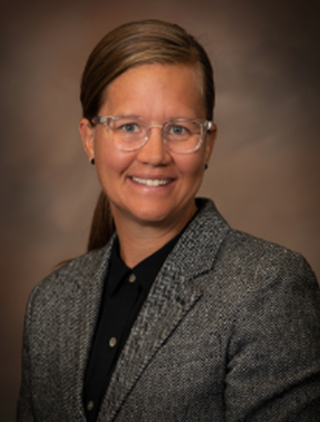Employer: University of Utah
Title: Adjunct Associate Professor (AAP), Mechanical Engineering; AAP, Atmospheric Sciences; AP, Chemical Engineering
Location: University of Utah
Research Area: Air Quality
Pathfinder Topic: Air Quality and Plume rise modeling
- Heather Holmes is an Associate Professor in the Department of Chemical Engineering at the University of Utah. Prior to this, she was in the Atmospheric Sciences Program at the University of Nevada, Reno. Her background is environmental engineering and atmospheric science with a research focus in air quality and atmospheric turbulence, in addition to regional scale air quality modeling, or exposure modeling, to better understand how air pollution is impacting human health.
- In the summer of 2021, her research team at University of Utah developed a method of combining a meteorological model with NASA satellite data to determine whether the wildfire smoke will stay high up or come down to the ground. This helps with more accurate predictions of whether and when smoke from a nearby wildfire could reach people on the ground.
- “Our hope is this technique gets incorporated into smoke forecasting as a way to improve warning systems related to smoke exposure,” says Holmes, whose research is focused on the physics and chemistry of air pollution.
- She has primarily used NASA products in the past, but with the new products coming online in support of NOAA geostationary satellites, she would like to start integrating those into her team’s workflow. She uses mostly fire related products like fire rate of power (FRP), Plume Injection Height (PIH), and Aerosol Optical Depth (AOD). The AOD is more difficult for algorithms to mitigate due to the change between desert and green land. Heather feels they have improved in the last four years, however, it's also hard with really big fires in the Western United States when you get the aerosol cloud interactions happening; That means you have a lot of missing AOD during those events and it tends to skew toward very high aerosol loading days, which results in underestimating the exposure that humans would be seeing. AOD is still helpful, but they just have to use it with caution.
- In general, there are three workstreams:
- The first is to better understand ambient air quality concentrations.
- The second stream is ‘can we forecast these ambient air quality concentrations so people can have warnings and alerts to protect themselves?’.
- The third stream is ‘can I model the exposure that humans are seeing related to that?’.
- Heather is interested in getting better temporal resolution datasets from the geostationary satellites. If datasets can be refreshed on a 15-minute basis vs. a daily basis, it will be really helpful. This would be especially helpful for fires in the Western US because they don’t behave the same way as the Northeast. There are a lot of fires that have been studied and so there is an expected temporal profile, but those expectations don’t normally hold true for large fires in the West.
- Heather and her team have been using data simulation for years in meteorological forecasting systems so they can ingest the surface wind speeds into their meteorological modeling workflow which helps improve that forecasting skill. If you run a finer resolution, like a 1-kilometer resolution over the Western US instead of a 30-kilometer, you also get better prediction skill with the wind speeds. Those are very difficult in mountainous regions.
- Heather’s team is also trying to get every available PIH product from any remote sensing platform available. That includes MISR and ash algorithms on Moderate Resolution Imaging Spectroradiometer (MODIS) and Visible Infrared Imaging Radiometer Suite (VIIRS). They are also working to get a test case from the GOES ABI. She's comparing it to aircraft light detection and ranging (LiDAR) data sets. Even if they have shortcomings, I think they're going to be really useful. I would be able to understand those shortcomings more after she finishes working through that.
- Through working with the NOAA Pathfinder Initiative, Heather and her team are looking to have a dataset to leverage for evaluation of the PIH product. The FRP data could potentially improve plume rise modeling if she could have it on a 15-minute basis. A lot of uncertainties with the modeling is characterizing your fire. Improved time resolution on the FRP would be really helpful.
Relevant Satellite Products, Data, and Tools
(Interest in GOES-ABI test case) Heather utilizes directly obtained aerosol optical depth (AOD) plumage action height, fire radiative power (FRP), surface albedo products, normalized difference vegetation index (NDVI) and burned area; plume injection height (PIH) products from multi-angle imaging spectroradiometer (MISR) and ash algorithms on Moderate Resolution Imaging Spectroradiometer (MODIS), Visible Infrared Radiometer Suite (VIIRS), aircraft light detection and ranging (LiDAR) data sets
